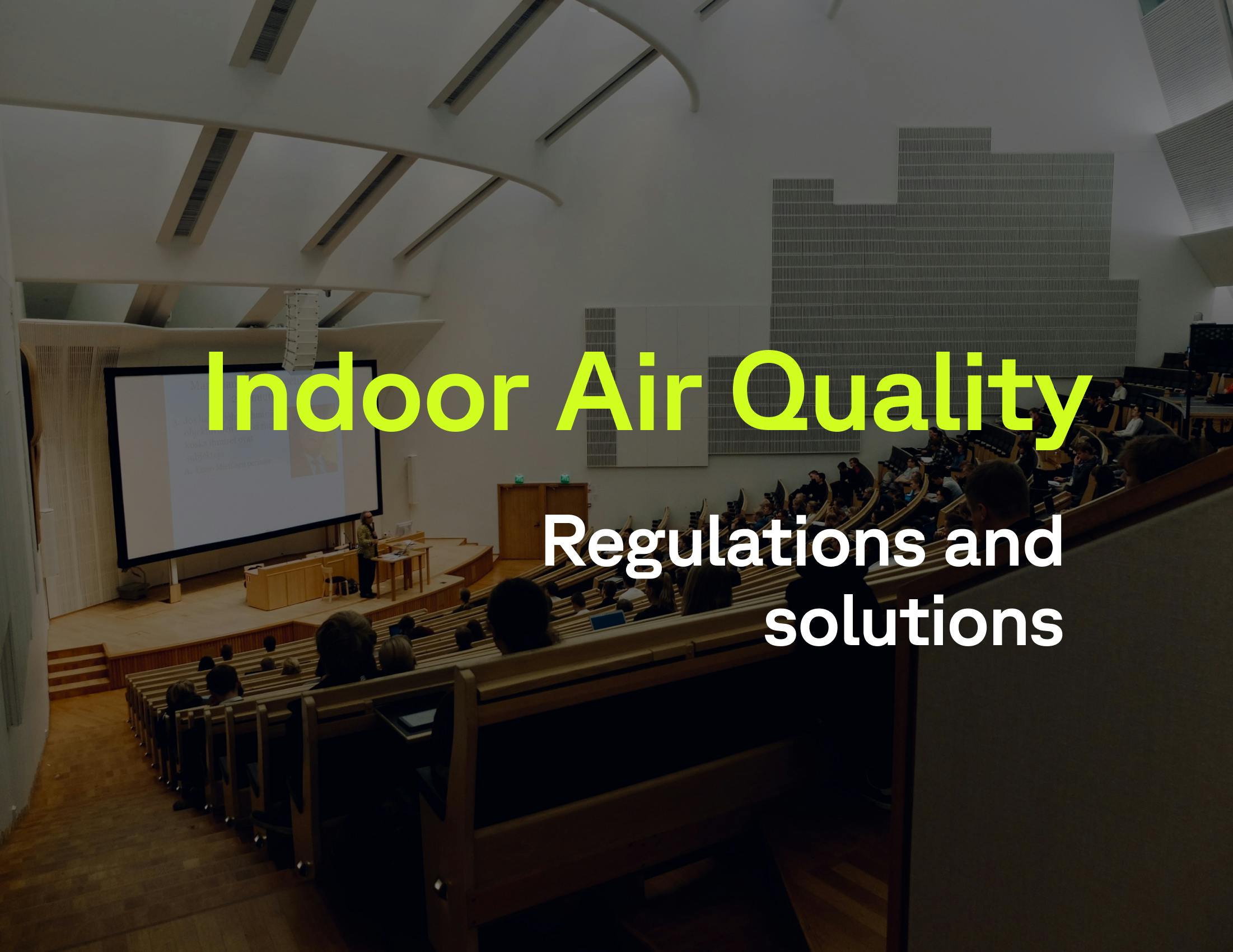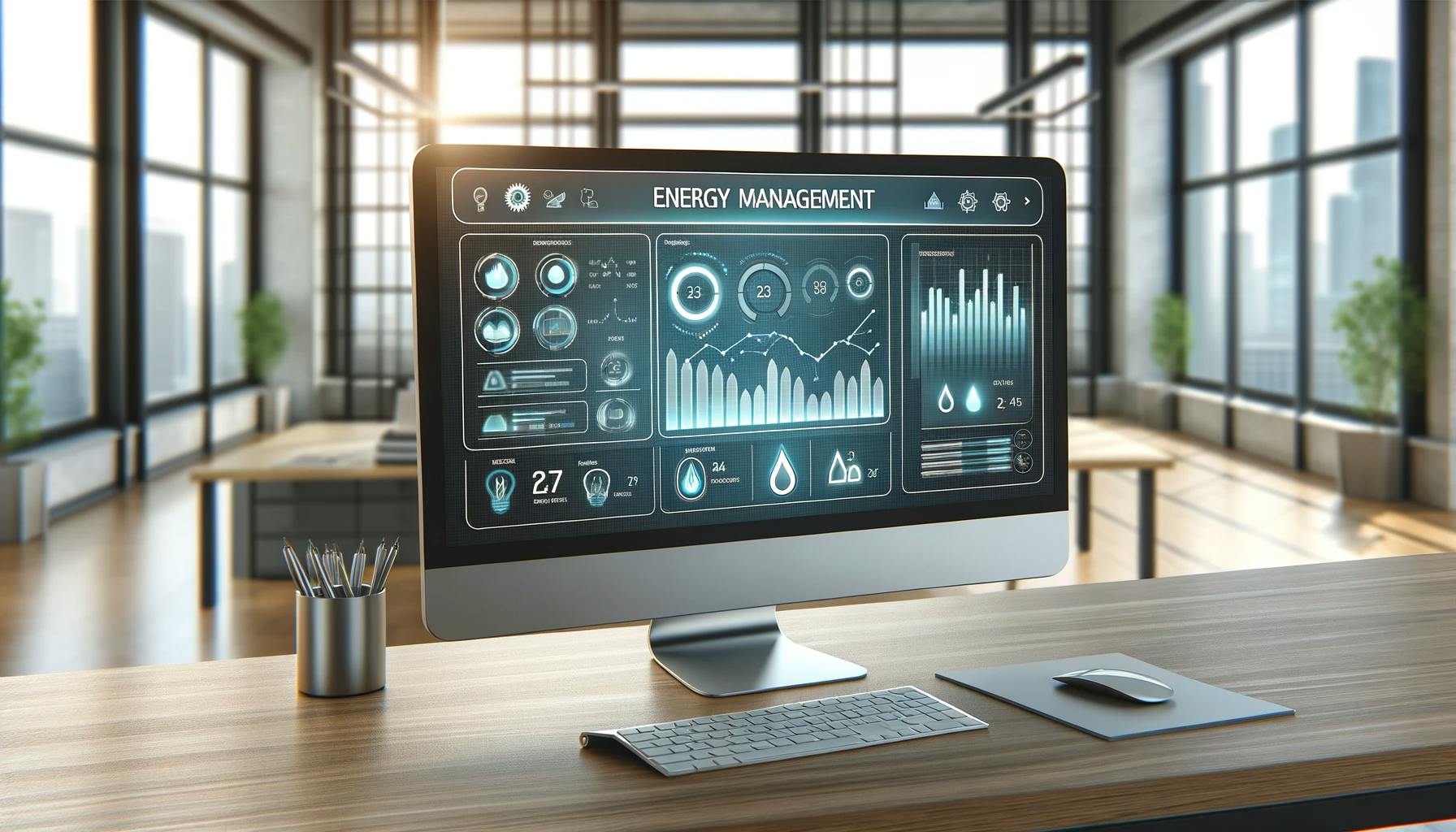Regulations for Indoor Air Quality in Non-Residential Buildings and Public Establishments

Indoor air quality (IAQ) is a major concern of the 21st century, especially given that, on average, we spend over 80% of our time indoors. Governments all over the world have recognized the severity of the issue and, starting from the early 2000s, launched ambitious national plans. Today, regulations govern the expectations regarding indoor air quality in public establishments and other non-domestic buildings.
In the United Kingdom, you have the Future Buildings Standard that requires adequate means of ventilation and the monitoring of indoor air quality as a way to reduce the transmission of airborne infectious agents in offices and other non-domestic buildings.
In France in 2015, a Senate inquiry estimated the cost of air pollution in France to be nearly 100 billion euros per year. The French Public Health Agency (Santé Publique France) suggests that approximately 40,000 deaths per year are linked to fine particles. This highlights the significance of
Regulation to enhance indoor air quality in the UK
The issue of air pollution and its impact on health has been a topic of public debate since the latter half of the 20th century. However, it was in the early 2000s that governments and international organizations began to work towards addressing it in a more regulated manner.
The Building Regulation- Document F for Buildings other than dwellings
This regulation became the main guideline for the building management sector in the UK. Document F focuses on ventilation and indoor air quality monitoring.
This document sets the requirement for adequate ventilation in buildings, via measures such as:
- Minimum airflow rates
- Air changes per hour
- Monitoring of indoor air quality in certain limited non-domestic settings.
- The regulation also contemplates the installation and commissioning of ventilation systems.
Buildings concerned by the Document F
offices, public buildings, hotels, gymnasiums, indoor sports venues, dance studios, theatres, concert halls, public houses, nightclubs, and places of assembly. It also concerns rooms kept at both low temperatures and low levels of humidity. These may include rooms used for chilled food processing and occupied cold stores such as supermarkets or food storage warehouses.
On the 15th of June, 2023 critical changes to Building Regulations Part F came into effect
- Building ventilation needs to meet a standard of 10 litres of fresh air per person per second, or one litre per second per square metre – whichever is highest.
- Common spaces also need natural ventilation, with openings at least 1/50th of the floor area, or mechanical ventilation to supply 0.5 litres of fresh air per second per m2 of the common floor space area.
- Here is the official document with all the ventilation and indoor monitoring specifications
Indoor Air Quality Monitoring in new buildings according to Document F
With these changes for the first time, IAQ is regulatory in the design and construction of non-domestic new builds in England.
The main objectives for new builds include:
- Guaranteeing ventilation is appropriate to reduce the risk of condensation and indoor pollution
- Securing the health and safety of the building's users or occupants.
Health and Safety Executive (HSE)
The Health and Safety Executive offer guidelines for indoor air quality in workplaces. While there isn't a specific regulation dedicated solely to indoor air quality, various health and safety regulations require employers to maintain a safe working environment, which includes ensuring acceptable indoor air quality levels and limiting exposure to certain pollutants and dangerous substances in the workplace.

What are the indoor air quality criteria?
The main criteria for measuring indoor air quality include:
Carbon dioxide (CO2) levels: High concentrations of CO2, often associated with dense human occupancy and insufficient air renewal, can lead to health problems such as headaches and decreased concentration. The presence of other chemical compounds, such as aldehydes, volatile organic compounds (VOCs), nitrogen oxides, and ozone, can also be evaluated.
Humidity and temperature levels: These factors not only affect comfort but can also be potential vectors for health issues. Mold growth due to high humidity levels can lead to allergies or more serious illnesses, while the emission of VOCs from certain materials can cause various health problems, including skin irritation and cancer.
The effectiveness of ventilation systems in filtering harmful particles from outside the building is also an important aspect of indoor air quality (IAQ). External pollutants can affect indoor air quality at ventilation entry points.
How to measure indoor air quality in a room?
Measuring and monitoring indoor air quality is essential for compliance with regulations and ensuring the health of occupants. There are sensors available to measure some essential variables such as CO2 levels, humidity, and temperature. However, deploying the necessary array of measurements for a complete consideration of IAQ parameters requires a significant number of devices, multiplied by the number of rooms in a building. Retrieving all the collected information is also very time-consuming. Therefore, many establishments prefer to rely on companies that regularly perform the required measurements.
A third approach is to optimize the use of connected sensors through the Internet of Things and connectivity solutions such as the Wattsense solution.
How to improve indoor air quality with Wattsense?
An innovative connectivity solution, Wattsense improves the energy performance, maintenance, and occupant comfort of a building. It consists of a Box installed in the building, allowing the connection and complete management of all sensors and equipment via a user console. This solution offers efficient centralization of sensor and technical equipment data, with benefits such as time reduction, error prevention, and data control.
In terms of indoor air quality monitoring, Wattsense enables easy and fast collection and centralization of data from humidity, temperature, CO2 level sensors, etc., using LoRaWAN technology.
Here's how to deploy an Indoor Air Quality (IAQ) monitoring solution with Wattsense:
1. Install air monitoring sensors to observe and control the air quality in the building.
2. Place the Wattsense Box (hardware) in the building to collect measurements transmitted by the sensors. Users can even define the frequency of data collection.
3. The information is then sent to the Wattsense User Console, where the data is centralized. It can be analyzed by users or even by third-party applications to provide relevant recommendations. It is also possible to set up alarms to anticipate potential air quality problems.
Using Wattsense and a LoRaWAN network is thus the most intuitive and efficient way to continuously monitor air quality and control the devices used to regulate it.
The Wattsense Tower optimizes your building's performance while reducing costs. By enabling you to regain control of your building's technical equipment, regardless of its size, condition, or usage, you can quickly improve its energy efficiency, maintenance, and occupant comfort. Don't hesitate to request a demo to learn more.
Want to learn more about the Wattsense connectivity solution?
Discover our solution


